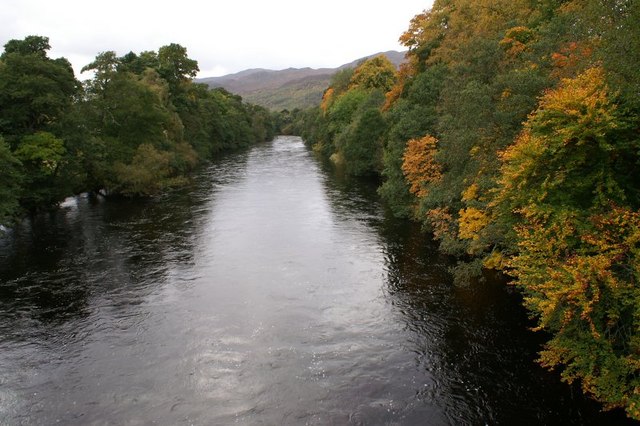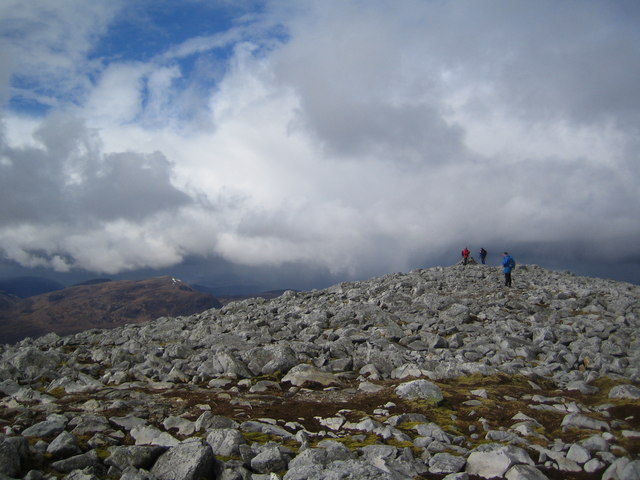|
Glen Strathfarrar
Glen Strathfarrar ( gd, Srath Farair) is a glen in the Highland region of Scotland, near Loch Ness. The Glen is part of the Affric-Beauly hydro-electric power scheme, with a dam at Loch Monar and a 9 km tunnel carrying water to an underground power station at Deanie; a second dam just below Loch Beannacharan feeds a tunnel carrying water to Culligran power station (also underground). The Monar dam at Loch Monar is the largest arch dam in Britain. The central section of Glen Strathfarrar (covering 4027 ha) is designated as a national scenic area, one of forty such areas in Scotland, which have been defined so as to identify areas of exceptional scenery and to ensure its protection from inappropriate development. The area covered by the NSA represents the section of the glen least affected by the hydro-electric scheme, and includes the Culligran Falls. Etymology Glen Strathfarrar is named for the River Farrar, recorded in Roman times as ''Varrar''. The name is from ' ... [...More Info...] [...Related Items...] OR: [Wikipedia] [Google] [Baidu] |
Sgùrr Na Lapaich
Sgurr na Lapaich is a mountain in the Northwest Highlands of Scotland, situated north of Loch Mullardoch in the high ground that separates Glen Cannich and Glen Strathfarrar. The mountain reaches a height of 1,150 metres (3,773 feet), and is the fourth-highest mountain north of the Great Glen. There is no higher ground to the north of it in Great Britain. With a topographic prominence of 839 metres, Sgurr na Lapaich is the highest point for some considerable distance and is a fine viewpoint. The mountain is particularly well seen from the east; it is a prominent landmark as far away as the Moray Firth, some thirty miles away, from where locals use it as a guide for the weather forecast. It should not be confused with another Sgurr na Lapaich, an outlying "top" of Mam Sodhail. Topography The name ''Sgurr na Lapaich'' means "Peak of the Bog" in Gaelic. This could be somewhat misleading, as it is a fine mountain with long ridges, deep corries and lochans, culminating in ... [...More Info...] [...Related Items...] OR: [Wikipedia] [Google] [Baidu] |
Scottish Gaelic
Scottish Gaelic ( gd, Gàidhlig ), also known as Scots Gaelic and Gaelic, is a Goidelic language (in the Celtic branch of the Indo-European language family) native to the Gaels of Scotland. As a Goidelic language, Scottish Gaelic, as well as both Irish and Manx, developed out of Old Irish. It became a distinct spoken language sometime in the 13th century in the Middle Irish period, although a common literary language was shared by the Gaels of both Ireland and Scotland until well into the 17th century. Most of modern Scotland was once Gaelic-speaking, as evidenced especially by Gaelic-language place names. In the 2011 census of Scotland, 57,375 people (1.1% of the Scottish population aged over 3 years old) reported being able to speak Gaelic, 1,275 fewer than in 2001. The highest percentages of Gaelic speakers were in the Outer Hebrides. Nevertheless, there is a language revival, and the number of speakers of the language under age 20 did not decrease between the 2001 and ... [...More Info...] [...Related Items...] OR: [Wikipedia] [Google] [Baidu] |
Hill Lists In The British Isles
The mountains and hills of the British Isles are categorised into various lists based on different combinations of elevation, prominence, and other criteria such as isolation. These lists are used for peak bagging, whereby hillwalkers attempt to reach all the summits on a given list, the oldest being the 282 Munros in Scotland, created in 1891. A height above 2,000 ft, or more latterly 610 m, is considered necessary to be classified as a mountain – as opposed to a hill – in the British Isles. With the exception of Munros, all the lists require a prominence above . A prominence of between (e.g. some Nuttalls and Vandeleur-Lynams), does not meet the International Climbing and Mountaineering Federation (UIAA) definition of an "independent peak", which is a threshold over . Most lists consider a prominence between as a "top" (e.g. many Hewitts and Simms). Marilyns, meanwhile, have a prominence above , with no additional height threshold. They range from small hills to ... [...More Info...] [...Related Items...] OR: [Wikipedia] [Google] [Baidu] |
An Socach (Glen Cannich)
An Socach is a mountain at the head of Glen Cannich, in the Highlands of Scotland. It is situated between Loch Mullardoch in Glen Cannich, and Loch Monar Loch Monar is a freshwater loch situated at the head of Glen Strathfarrar, in the West Highlands of Scotland. Since the 1960s, it has been dammed as part of the Affric-Beauly hydro-electric power scheme. The loch is fed by a number of small burn ... in Glen Strathfarrar. References Munros Mountains and hills of Highland (council area) Marilyns of Scotland One-thousanders of Scotland {{Highland-geo-stub ... [...More Info...] [...Related Items...] OR: [Wikipedia] [Google] [Baidu] |
An Riabhachan
An Riabhachan is a Scottish mountain in the Skye and Lochalsh district of the Highland council area. It is situated 35 kilometres east of Kyle of Lochalsh standing in an isolated position at the western end of Loch Mullardoch, ten kilometres from any public road. Overview An Riabhachan reaches a height of 1129 metres (3704 feet) and is one of the highest Munros north of the Great Glen. The mountain's name originates from the Gaelic language and translates as “The Brindled One” which is believed to refer to the flecked effect given by the stone studded turf on the hill."The Magic of the Munros" Page 148 Gives details of translated name. Geography An Riabhachan is a mainly grassy mountain. The only rocky area is at the north-east end of the summit ridge, above the fine craggy coire of Coire Gnada containing the lochans of Loch Mòr and Loch Beag. The east ridge links to the adjacent Munro of Sgurr na Lapaich and follows the steep edge above Coire Gnada. The m ... [...More Info...] [...Related Items...] OR: [Wikipedia] [Google] [Baidu] |
Càrn Nan Gobhar (Mullardoch)
Càrn nan Gobhar is a mountain rising to in the Northwest Highlands of Scotland. It stands on the northern side of Loch Mullardoch in the upper part of Glen Cannich, in a remote group of four Munros informally known as "The Mullardochs" which form the high ground between Loch Mullardoch and Loch Monar. Overview Càrn nan Gobhar reaches a height of 993 metres (3258 feet) and qualifies as a Munro and a Marilyn (hill), Marilyn. Somewhat confusingly there is another Càrn nan Gobhar (Strathfarrar), Càrn nan Gobhar, also a Munro with exactly the same height situated 14 kilometres to the north east on the northern side of Glen Strathfarrar. Càrn nan Gobhar is the lowest of the four Munros on the north shore of Loch Mullardoch and is rather overshadowed by them. Topographically it is quite featureless, being mainly composed of rolling grassy slopes interspersed with patches of rock and scree, though with steeper slopes on the west and east flanks. The hill's name transla ... [...More Info...] [...Related Items...] OR: [Wikipedia] [Google] [Baidu] |
Càrn Nan Gobhar (Strathfarrar)
Càrn nan Gobhar is a mountain rising to in the Northwest Highlands of Scotland. It lies north of Glen Strathfarrar and south of Glen Orrin, some 40 kilometres west of the city of Inverness. It is usually climbed along with the neighbouring Munros of Sgurr a' Choire Ghlais and Sgurr na Ruaidhe. Somewhat confusingly there is another Càrn nan Gobhar (Mullardoch), Càrn nan Gobhar, also a Munro with almost the same height, standing 14 kilometres to the south west, on the opposite side of Glen Strathfarrar. References [...More Info...] [...Related Items...] OR: [Wikipedia] [Google] [Baidu] |
Sgùrr A' Choire Ghlais
Sgurr a' Choire Ghlais is a mountain in the North-west Highlands of Scotland. It lies between Glen Strathfarrar and Glen Orrin and it is an excellent viewpoint, being the highest mountain in its group - a group which includes the Munros of Sgurr na Ruaidhe, Sgurr Fhuar-thuill and Carn nan Gobhar. Northwards there is no higher ground apart from the Fannichs. It is one of the most difficult hills to reach in Scotland, the shortest route involving a 10-mile approach up Glen Strathfarrar. A bicycle, or permission to drive along the private road up Strathfarrar, may shorten the approach. See also * List of mountains of the British Isles by relative height * List of Munros * List of Marilyns in the Northern Highlands This is a list of Marilyn hills and mountains in the United Kingdom, Isle of Man and Ireland by height. Marilyns are defined as peaks with a prominence of or more, regardless of height or any other merit (e.g. topographic isolation, as used in ... Footnotes ... [...More Info...] [...Related Items...] OR: [Wikipedia] [Google] [Baidu] |
Munro
A Munro () is defined as a mountain in Scotland with a height over , and which is on the Scottish Mountaineering Club (SMC) official list of Munros; there is no explicit topographical prominence requirement. The best known Munro is Ben Nevis (Beinn Nibheis), the highest mountain in the British Isles at . Munros are named after Sir Hugh Munro, 4th Baronet (1856–1919), who produced the first list of such hills, known as ''Munro's Tables'', in 1891. Also included were what Munro considered lesser peaks, now known as Munro Tops, which are also over 3,000 feet but are lower than the nearby primary mountain. The publication of the original list is usually considered to be the epoch event of modern peak bagging. The list has been the subject of subsequent variation and as of 10 December 2020, the Scottish Mountaineering Club has listed 282 Munros and 226 Munro Tops. "Munro bagging" is the activity of climbing all the listed Munros. As of 31 December 2021, 7,098 people had reported ... [...More Info...] [...Related Items...] OR: [Wikipedia] [Google] [Baidu] |





